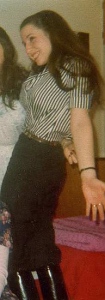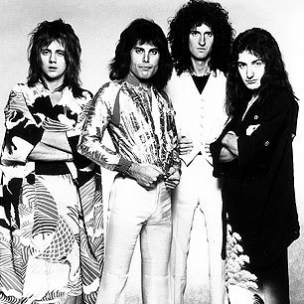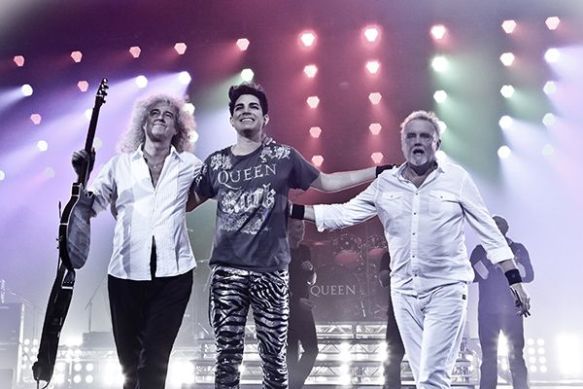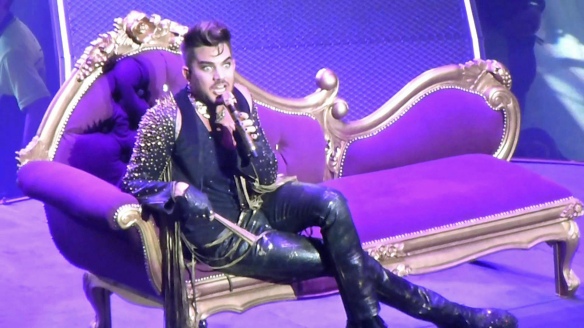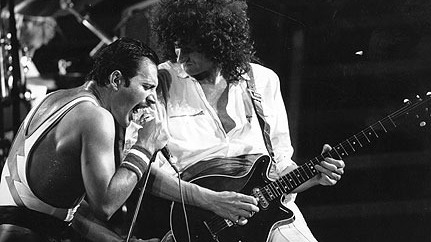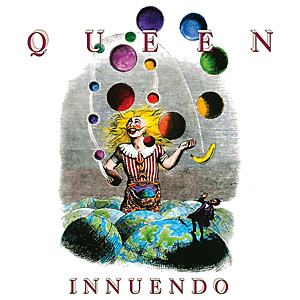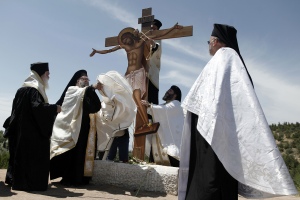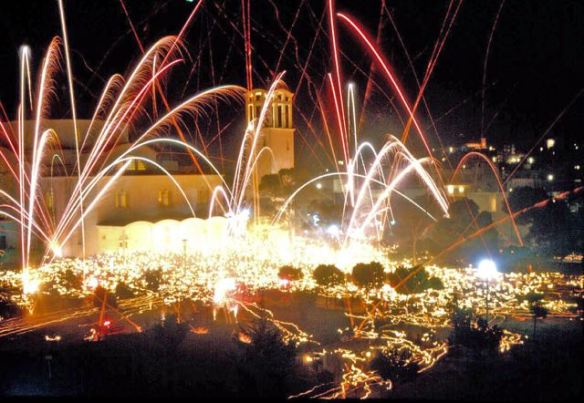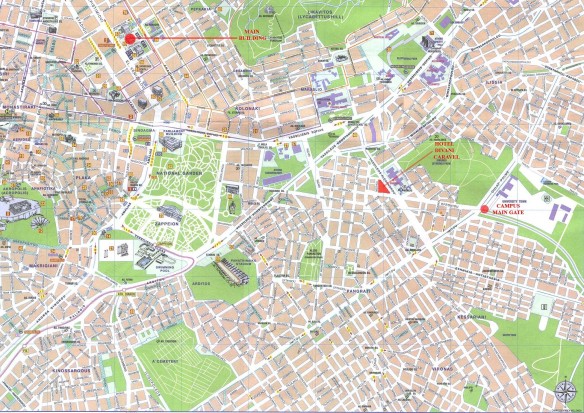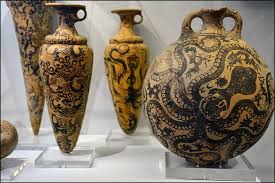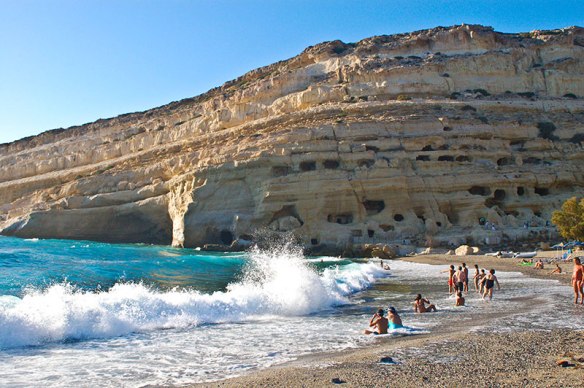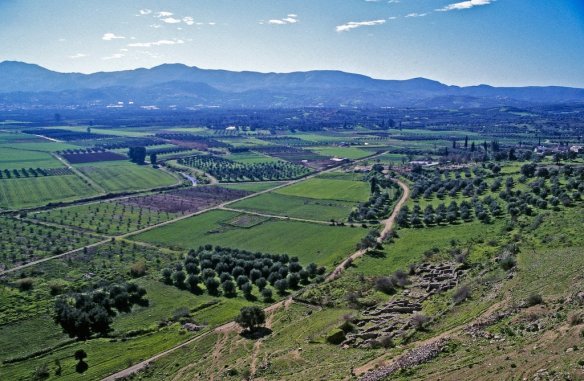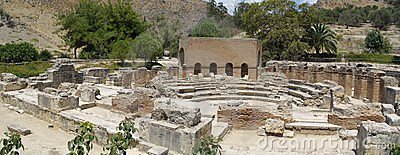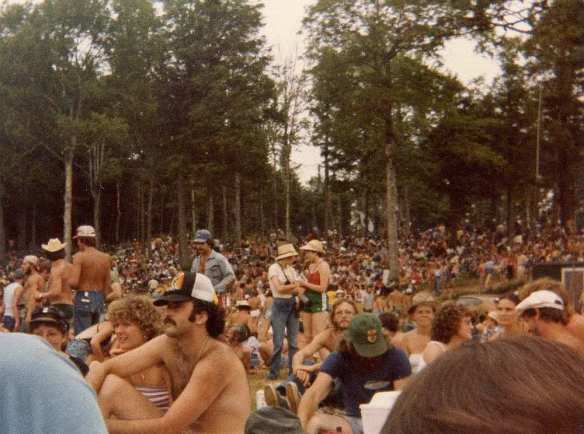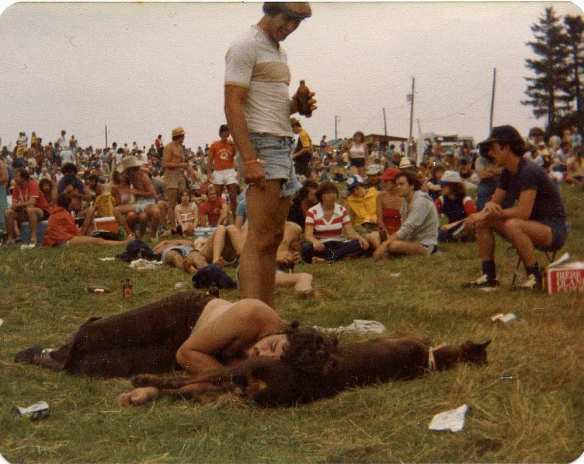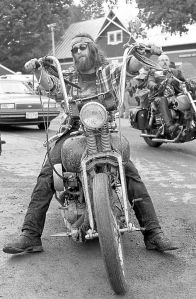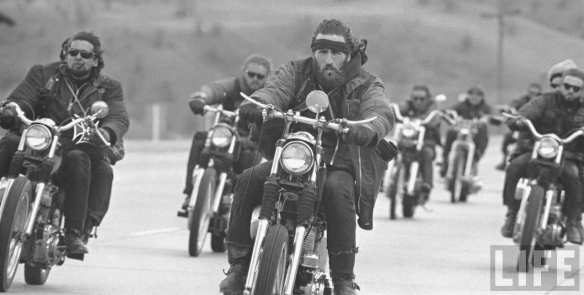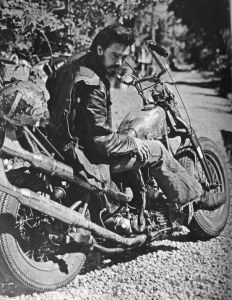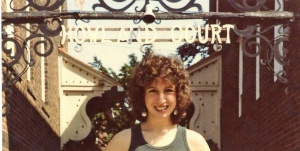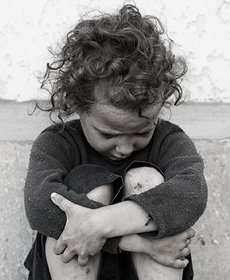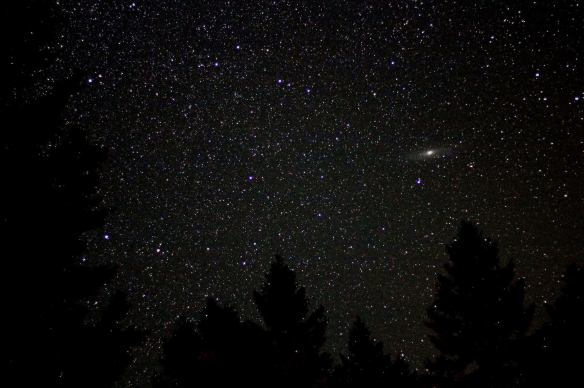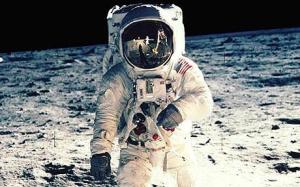When you are a practising artist, your limitations become quite evident to you in a very short time. As you meet various situations, some cause you great difficulty and frustration; and if you are concerned with your development as a painter, you quite naturally look for some way to solve them.
Bernard Safran 1974
Introduction/background information: We moved to Jolicure, NB Canada from New York in January 1973. Jolicure was situated about 10 miles from the town of Sackville, where Mount Allison University is located.
Mount Allison University at that time, had an art school led by Lawren Harris Junior – son of Lawren Harris Senior, a founding member of the Group of Seven (a group of 20th century Canadian landscape painters).
The art school had several Canadian realist artists they could boast about – Alex Colville was also associated with the school (we had dinner with the Colvilles that first winter), as were Mary Pratt and Christopher Pratt, and Tom Forrestall. On staff at the time were Ted Pulford an accomplished watercolorist and David Silverberg a remarkable and internationally recognized printmaker.

This self portrait shows my father Bernard Safran in his studio in Jolicure. The studio was in the kitchen loft of the old farmhouse. The Studio, Jolicure by Bernard Safran, oil on masonite, December 1980.
As soon as we’d moved to New Brunswick, my father’s arrival to the local art scene was celebrated. In 1974 (a year after we’d moved to Canada) my father had a show of his New York paintings at the Owens Art Gallery on campus. In 1976 The Owens Art Gallery purchased a major work of his entitled Canadian Gothic for its permanent collection. He was also commissioned to paint several formal portraits of senior University staff. And he was asked to give several talks to the art students on campus and to other interested art lovers in town.
My father was initially led to believe that he was being courted for the head of the art school position. Not only were members of the art school faculty telling him this, but other leading academic figures on campus and leading business people in the town were forming alliances and pushing for him.
The University eventually hired a more radical, non-representational artist to head the school – it being the 1970s when the tide had already turned dramatically against realism throughout the art world.
Despite the official change in department philosophy, a yearly van of personally motivated students would venture out to our remote farmhouse in Jolicure to spend a day with my father. He would take them up to his studio in the kitchen loft and show them his work, talk to them about how he painted, and discuss art.
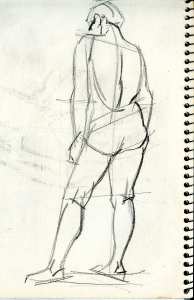
A quick sketch my father drew for me to show how to the figure’s weight is balanced.
He would have enjoyed being a professor – he was a good teacher, and understood the business end as well as the creative end of the art world. He’d had extensive training in all forms of art and was open to everything…
He was a patient and supportive teacher, and was able to clearly demonstrate how to do things. He gave me one-on-one instruction one summer when I was a teenager… so I speak from experience.
But the head of the art school job never came to pass – which only fed his theories about being black balled by Time Magazine and their minions.
(Please see my previous posts about his paranoia – https://myartsyodyssey.wordpress.com/2014/01/06/paranoid-dreams/ , https://myartsyodyssey.wordpress.com/2014/02/05/aint-life-a-bitch/ https://myartsyodyssey.wordpress.com/2014/01/31/a-painful-state-of-mind/ )
This is one of the first talks he gave to students in 1974. In it he describes in simple terms how he chose to paint – his basic approach, and the basic techniques he employed to build a painting.
“My Method of Painting” by Bernard Safran
Gardner Fine Arts Building – Mount Allison University, March 11, 1974
Mr. (Ted) Pulford has asked me to talk to you today about my method of painting. Some of the things that I will speak to you about are elementary, and I’m sure that you have heard them before. For this I apologize, but I feel that they are necessary to what I am going to say.
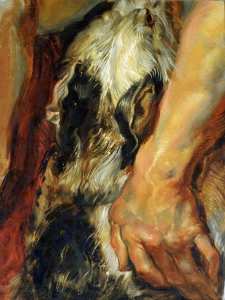
Copy by Bernard Safran, completed July 1956: detail from Atalanta and Meleager by Rubens, Metropolitan Museum of Art.
There are two primary ways of painting in oil. One is the direct method which is in the most common use today. The other is the indirect method which is the one I use.
When you paint directly as you all know, you mix whatever color you want on the palette and apply it to your canvas, aiming as closely as you can for the final result. You are painting in the old phrase “alla prima”. This allows great flexibility, because anything that you do as the painting progresses can easily be changed. The basic design can be altered as you go on, if you so wish.
The indirect method, or underpainting and glazing is based on a diametrically opposed concept. Here your picture is built as a house is from a plan, on a sound foundation, and in several stages. Therefore your picture must be conceived before you begin to paint, and any innovations should take place then or in the early stages. After that you cannot easily alter your original idea.
As you can understand this is a far more complex procedure than painting directly and places a severe restriction upon you. Why use it then? The answer is that in spite of this shortcoming, which really has not in practice hampered anyone’s creativity, this way of painting draws the widest range of possibility out of the paint. If done properly, its superiority in terms of its life-like qualities, greater subtlety, and the chance of a profounder statement, when compared side by side to the other method are, I feel, instantly obvious to the most casual observer.

Copy on canvas by Bernard Safran, August 1956: Titus by Rembrandt, Metropolitan Museum of Art
When you are a practising artist, your limitations become quite evident to you in a very short time. As you meet various situations, some cause you great difficulty and frustration; and if you are concerned with your development as a painter, you quite naturally look for some way to solve them.
In my case, after nine years as a free lance illustrator in New York, I decided that I really did not know how to paint very well. I wanted a way of painting that would allow me complete freedom from the process. In other words, it seemed to me that I was spending way too much of my time fighting the paint; trying to make it do things that I or it was not capable of doing.
So I thought that the best place to learn what was wrong and how to correct it was to go to the best painters of all time, and see whether I couldn’t learn something from them. These artists were in my view the old masters.

A double page spread in Life Magazine on Bernard Safran copying Rembrandt’s Self Portrait at the Metropolitan Museum of Art in New York City. photo by Farrell Grehan 1964.
I chose Rubens, Velasquez and Rembrandt to emulate. The pictures were available to me in New York. I decided to copy these artists. This is the old method of learning and has been practiced by almost every artist of note in the history of painting. It was my idea to try to reconstruct the pictures I was copying with the intention of learning how they were done. I had for many years read many books which described the various ways of doing this. They frequently are contradictory, give many confusing details, and are valuable where they agree on general lines only.
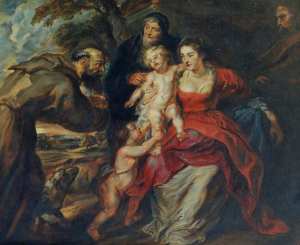
Copy by Bernard Safran, June 1958: Holy Family with Saints by Rubens, Metropolitan Museum of Art.
It is a very different matter to approach this problem brush in hand than it is to read about it, and I concluded that it was necessary for me to take and empirical point of view, that is – if it works it is good; if it doesn’t work it is no good.
Rubens and Velasquez knew each other. Rembrandt lived at the same time and geographically close to Rubens. It appeared to me in looking at the paintings that they used the same methods. The different results were due only from the differences in their backgrounds and personalities. The paint quality seemed to me very similar. The striations of the brushes in the paint looked alike to me.
I chose Rubens to study primarily. For one thing he was the most versatile of the three. He could and did paint an enormous variety of subject matter and everything from very small pictures to acres and acres of canvas. He is the most brilliant colorist of the three and for sheer beauty of the handling of his paint, is in my opinion the most superior. His method is the most obvious and there is also a good deal of material on how he worked. Velasquez watched him at work in Madrid, was strongly influenced, subsequently went to Italy to study on Ruben’s recommendation, and completely changed his work as a result. From a very good court painter of stiff labored portraits, he became one of the greatest painters of all time.
So what I tried to do was to construct my pictures the way I thought Rubens did based upon what I had read and what I could see.
The theory is fairly simple. As you know you cannot reproduce life. If you have tried only to copy the model the result is something poor. What you can do is transpose the conditions that exist to the paint, and through the use of the qualities of the paint contrive an effect of life. You are in reality fooling the eye. It is much like an actor who must whisper on stage. If he actually does whisper, he will not be heard beyond the first few rows of the audience. But he must whisper into the upper reaches of the balcony! So that is what you are doing in paint; giving an impression bound by the limitations of what you are using. If it is well done, you should achieve something which gives to the observer an increased awareness of life, and, this is where the art lies.
What I mean by transposing the conditions is this: You look at a model for example. Most models are painted under a north light which is cool. If the light is cool, the absence of light is warmer. The shadows are therefore warmer than the light. The strongest light on the model is the highlight. The strong light washes out the color so there is little color in the highlight. Where there is no light there is also an absence of color. Therefore there is a minimum of color in the shadow and the highlight. The color is in the areas between them – the half tones.
Between the half tones and the shadow there must be transition tones. If you actually place a model in a strong cool light with warmer shadow and stare hard at the model, you will find that the transition tones are quite cool. You can see a bluish cast to them. As you continue to gaze at the model, you can see that the lights have an opaque quality and the shadows have a translucent quality. These then are the conditions that actually exist, and these are the conditions you must reproduce in your paint if you wish to give the feeling of life.
How do you go about doing this in a practical way First you must consider the ground that you will paint on. Remember that I tried to follow Rubens’ procedure. He went to a gesso ground. This was considered a regression in his time to the early tempera painters since painters of his day to aid in rapidity in finishing had been painting on dark grounds. The reason for the white gesso ground in his panels was because, as oil paint ages, it darkens and also becomes more transparent. The white gesso ground tended to counteract this and also provided in effect an inner light which gave a glow to the color superimposed on it. In his canvases I believe he used a white lead ground. Many writers speculate that gesso grounds were used on canvas, but anyone who has tried it finds that on the first pressure of the brush, the ground cracks. The paintings on canvas also have a slightly lower tone than those on panels.
After the white had been suitably applied, Rubens covered it with a grey coat. The purpose of the grey was this: To paint transparent shadow the paint must be thin, and this is possible with a toned surface. On white your tendency is to paint the shadows too heavily to counteract the white. Also on the grey, as you put your lights in they stand out. So that when you apply your shadow and your lights, you immediately get something of a three dimensional quality. Rubens’ streaky grey also had the purpose of livening the ground, and because of its uneven nature breaking and vibrating the color that was to be placed above it. This grey coat, in addition, isolates the white ground from the rest of the painting and allows it to function as I have previously described it.

In this study piece, you can see how Safran prepared the board and put down the color following the directions laid out by Rubens. Study of hands by Bernard Safran, oil on masonite, 1963
When this was done, the next stage was to draw the composition on the picture and paint its value pattern. This way of painting is a logical division of the labor. You must think only of one thing at a time, and therefore you make fewer errors. This underpainting was done in a brown which is neutral and will not adversely affect the color upon it. The shadows were loosely and thinly done, the lights were painted in grey. So then, you had a monochromatic underpainting which defined the composition and the black and white pattern. It was then allowed to dry.
The next stage was the color. This was put on at first very thinly. The color in this method is mixed very simply. Never more than two colors and white, mostly one color and white, and the shadows in translucent glazes without white. The color mixed in this way is very fresh and is actually blended on the picture. The grey ground and underpainting are allowed to come through here and there, and what happens is that you mix the colors with your eye. This is known as the use of optical greys.
The ground and underpainting add to the unity of the picture subliminally. As you all know one of the chief characteristics of painting is that it presents an idea at one blow as it were. This is of course its greatest strength and severest limitation. Anything that adds to the unity of the idea advances this and the optical greys are a means of exploiting this quality. In the final stage, the impastos or thick paint in the lights is strengthened and the form is finally defined. The picture is actually worked from dark to light.
I would like to quote something attributed to Rubens himself. Quote: “Begin by painting your shadows lightly. Guard against bringing white into them; it is the poison of the picture except in the lights. Once white has dulled the transparency and golden warmth of your shadows, your color is no longer luminous, but mat and grey. The same is not the case with light areas. There one can set in the color as one thinks proper. They have body still one must keep them pure. Good results are obtained if one sets down each tone in its place, one next to the other, lightly mixing them with the brush, while taking pains not to torment them.” Unquote.

Copy by Bernard Safran, July 1960: Atalanta and Meleager by Rubens, Metropolitan Museum of Art.
Another quote from Rubens on the painting of skin. Quote “Paint your highlights white; place next to them yellow, then red, and use darker red to carry them over into the shadows. Then fill the brush with cold grey and go tenderly over the whole until it is subdued and softened to the desired tone. Since flesh is of a soft nature, we find pearly reflexes playing on its surface, and for the most part they are visible where the color is tenderest.” Unquote.
At this point, I would like to discuss something related to all of this. You are all familiar with linear perspective which is what everyone thinks of when you say perspective. There is another kind of perspective called aerial perspective. It had been used by painters before Rubens, but he applied it systematically in his work so that it is possible in a general way to codify it. I will partially quote from Jacques Maroger who says, “This is the perspective of values – the gradual fading in intensity of tones and colors as they recede into distant planes, and are veiled by the intervening atmosphere. Such effects could be produced on canvas and the impression of reality could be greatly enhanced by contrast in transparence and opacity.

Studies of the compositions of three paintings by Goya by Bernard Safran. Safran used this method to study many paintings to better understand composition and the use of tonal qualities in masterpieces. From one of Safran’s sketchbooks – early 1960s.
What we use to obtain these effects is one of the artist’s chief weapons, that of contrast. The light and shade; the contrast of transparence and opacity; the contrast of emphasis or accent by means of the brush stroke; the contrast of the quality of the color – that is of warm and cool color. So that the center of interest carries the most of these contrasts; the greatest transparency and opacity; the greatest differences between light and dark and warm and cool, and the sharpest accents. The subsidiary parts of the painting are all graded to their proper place. The furthest horizon has the least contract for example. Even in individual details this principle is applied so that the picture is orchestrated toward whatever purpose is applied so that the picture is orchestrated toward whatever purpose the painter has in mind.”??
In considering the color of these pictures, I would like to say again that the chief aim in this type of painting is to present a single unified idea. Therefore the color scheme is adapted for this purpose. Only a minimum number of colors are used. The smallest number compatible with the main purpose. This limited use of color means that a greater unity is achieved. By the use of contrast as I have said it is possible to draw endless variation of color in this way and also contribute to the completeness of the whole. So that in Rembrandt’s pictures there are only a few colors on his palette – rarely any blues or greens. My analysis says that he used Naples yellow, yellow ochre, an earth red in the skin and accessories, what corresponds to alizarin crimson, one or two browns and black and white. His effects are achieved by the extensive use of the contrasts I spoke of; by varying the texture of the paint; by scraping it with his brush handle; by rubbing it with his fingers; by laying it on with the knife. So that with a very limited color scheme and by using his materials ingeniously and to their full capacity, he displays works that have and are exciting wonder to this day.
There is one more aspect of this and a very important one. That is the medium that is used to paint in this way. You can see that you must have a proper material to do all this. It cannot be achieved with linseed oil alone. There are many theories on what mediums were used and a good deal of controversy on this subject. There are endless formulas, some that work many that don’t. Again this can be very subjective. It has been supposed by many writers, that the painters I have discussed did a very careful tempera painting before they glazed with oil color. While I believe that this was true of a great many painters into and beyond the Rennaisance, I don’t believe it is true of Rubens, Velasquez and Rembrandt. I believe their underpainting was loosely done with the same medium that was used for the overpainting.

An assortment of some of the raw materials Safran used to make his Black Oil Medium and to paint with.
I also believe that the medium had to contain one of the soft resin ethereal varnishes such as mastic or damar, since they do reproduce the paint quality of these men when used properly. Restorers complain about Rembrandt because of the fragility of his glazes, which indicates a soft resin was used.
The medium that I use was formulated by Jacques Maroger, former technical director of the Louvre and President of the Restorers of France. He spent his life working on the reconstitution of the painting media of the old masters from Van Eyck through Velasquez. I believe that the formulas that I have tried are pretty near what was used. Of course the materials and how they were produced long ago are not the same as today, so there is some difference.
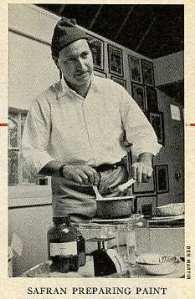
Safran preparing Black Oil Medium in his studio in Bronxville NY. From Time Magazine’s Letter from the Publisher, 1961
Maroger’s work has been derided by contemporary technical experts because it basically is a cooked linseed oil with lead, and has a dark brown color. In my case it is combined with mastic. This is contrary to the modern concept of using the most refined and colorless oils. I can only say that in my experience of nearly twenty years of use, it has stood up beautifully. None of the whites have yellowed, none of the pictures have changed. They are as they were painted. I don’t think anyone can ask better than that.
What I have told you is general. It is applied in a multitude of ways, and must be thought of as a guide and not a series of hard and fast rules. It may sound complicated, but after you are accustomed to it, it is not. It permits a rapid result. The evidence is the great quantity of work that was done by these painters in relatively short periods of time.
That is my way of working. Everyone has his own preferences and finds his own answers. It has given me a much larger scope in what I am able to do, and hopefully allows my work to evolve and inspire as time goes on.
I have brought a few examples of what I have been talking about, and we can talk about them now.

One of my father’s original works from the New York series, The Window by Bernard Safran, oil on masonite, June 1970.

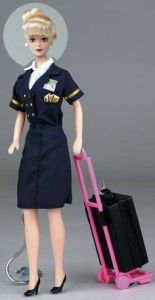 On a flight from Toronto to Washington DC I sat next to an off duty American stewardess. She had perfect blonde hair, perfect makeup and perfect clothes and was very pretty. She looked like a Barbie doll stewardess. She was really nice and fun and we talked and talked during the flight.
On a flight from Toronto to Washington DC I sat next to an off duty American stewardess. She had perfect blonde hair, perfect makeup and perfect clothes and was very pretty. She looked like a Barbie doll stewardess. She was really nice and fun and we talked and talked during the flight.







